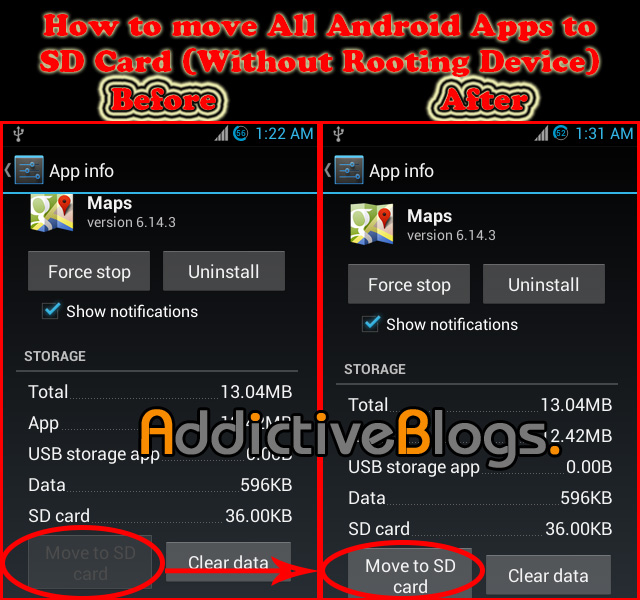In today’s technology-driven world, databases play a critical role in managing and storing data. As the demand for skilled professionals in data management continues to grow, it’s important to understand the wide array of database technologies available. This blog post consolidates essential interview questions and answers across various database types, including in-memory, graph, time-series, hierarchical, network, object-oriented, relational, cloud, centralized, operational, and NoSQL databases. Whether you’re preparing for an interview or seeking to deepen your knowledge, this guide will help you confidently discuss these topics.
Section 1: In-Memory Database Interview Questions
1. What is an in-memory database, and how does it differ from traditional databases?
Answer:
An in-memory database stores data directly in the system’s RAM rather than on disk storage. This allows for much faster data retrieval and processing compared to traditional disk-based databases. The key difference is the storage medium: traditional databases use slower disk storage, while in-memory databases leverage RAM to achieve low-latency access.
Follow-up Tip: Mention specific use cases like real-time analytics and high-frequency trading to illustrate the practical applications of in-memory databases.
2. Can you name some popular in-memory databases and their typical use cases?
Answer:
Popular in-memory databases include:
- Redis: Used for caching, session management, and real-time analytics.
- Memcached: Commonly used to cache frequently accessed data in web applications.
- SAP HANA: Used in enterprise applications for real-time data processing and analytics.
Follow-up Tip: Discuss how Redis supports various data structures like strings, lists, and sets, which makes it versatile for different applications.
3. What are the advantages and disadvantages of using an in-memory database?
Answer:
Advantages:
- Speed: Extremely fast read/write operations.
- Low Latency: Ideal for real-time applications.
- Scalability: Some in-memory databases can scale horizontally to accommodate large datasets.
Disadvantages:
- Volatility: Data stored in RAM may be lost if the system crashes unless persistent storage mechanisms are used.
- Cost: RAM is more expensive than disk storage, which can increase infrastructure costs for large datasets.
Follow-up Tip: Discuss durability options like Redis’s AOF (Append Only File) persistence mode.
Section 2: Graph Database Interview Questions
1. What is a graph database, and when should it be used?
Answer:
A graph database is a type of NoSQL database that stores data in nodes (entities) and edges (relationships), allowing for efficient querying of complex relationships. It’s particularly useful in applications like social networks, recommendation engines, and fraud detection.
Follow-up Tip: Explain how graph databases differ from relational databases by highlighting the ability to traverse relationships directly.
2. How does a graph database differ from a relational database?
Answer:
While relational databases store data in tables with rows and columns, graph databases store data as nodes and edges. In a relational database, relationships are represented through foreign keys, requiring joins to query related data. In contrast, graph databases explicitly store relationships, allowing for faster querying of connected data.
Follow-up Tip: Mention that graph databases like Neo4j are optimized for queries that involve traversing relationships, which would be more complex and slower in a relational database.
Section 3: Time-Series Database Interview Questions
1. What is a time-series database, and what makes it unique?
Answer:
A time-series database is optimized for storing and querying time-stamped or time-series data. This type of database excels in scenarios where data is collected over time and needs to be analyzed for trends, patterns, or anomalies, such as monitoring system performance metrics, financial data analysis, and IoT sensor data.
Follow-up Tip: Highlight how time-series databases handle high write-throughput, making them ideal for real-time data ingestion.
Section 4: Hierarchical Database Interview Questions
1. What is a hierarchical database, and where is it typically used?
Answer:
A hierarchical database organizes data in a tree-like structure where each record has a single parent and potentially multiple children, resembling a family tree. This model is often used in applications like file systems, organizational structures, and XML document storage, where data naturally forms a hierarchy.
Follow-up Tip: Mention that hierarchical databases are efficient for representing hierarchical data relationships but less flexible than relational databases.
Section 5: Network Database Interview Questions
1. How does a network database differ from a hierarchical database?
Answer:
A network database uses a graph-like structure that allows for more complex relationships than a hierarchical database. In a network database, each record can have multiple parent and child records, enabling many-to-many relationships. This model is useful in applications like telecommunications and transportation networks.
Follow-up Tip: Discuss the CODASYL (Conference on Data Systems Languages) model, which laid the foundation for network databases.
Section 6: Object-Oriented Database Interview Questions
1. What is an object-oriented database, and when is it used?
Answer:
An object-oriented database integrates database capabilities with object-oriented programming language capabilities, storing data in objects rather than tables. This type of database is particularly useful in applications where complex data and relationships need to be stored as objects, such as in CAD/CAM, multimedia databases, and complex simulations.
Follow-up Tip: Explain how object-oriented databases can store more complex data structures directly, which can be cumbersome in relational databases.
Section 7: Relational Database Interview Questions
1. What is a relational database, and why is it widely used?
Answer:
A relational database organizes data into tables (relations) where each table consists of rows (records) and columns (fields). It uses SQL (Structured Query Language) to manage and query data. Relational databases are widely used due to their ability to handle large amounts of structured data, enforce data integrity, and support complex queries.
Follow-up Tip: Discuss the ACID properties (Atomicity, Consistency, Isolation, Durability) that ensure data integrity in relational databases.
Section 8: Cloud Database Interview Questions
1. What is a cloud database, and what are its benefits?
Answer:
A cloud database is a database service that is built, deployed, and accessed in a cloud computing environment. Cloud databases offer scalability, cost-efficiency, and flexibility. They allow businesses to scale their database infrastructure according to their needs and pay for only the resources they use.
Follow-up Tip: Mention popular cloud databases like Amazon RDS, Google Cloud SQL, and Microsoft Azure SQL Database.
Section 9: Centralized Database Interview Questions
1. What is a centralized database, and what are its advantages and disadvantages?
Answer:
A centralized database is a single database located at one site that serves the entire organization. The main advantage is easier data management and control. However, disadvantages include a single point of failure and potential performance bottlenecks as all requests are directed to a single database.
Follow-up Tip: Compare centralized databases with distributed databases, where data is spread across multiple locations.
Section 10: Operational Database Interview Questions
1. What is an operational database, and how does it differ from a data warehouse?
Answer:
An operational database is designed to handle day-to-day transaction processing. It stores real-time data and supports operations such as inserts, updates, and deletes. In contrast, a data warehouse is optimized for read-heavy operations like complex queries and reports, storing historical data rather than real-time data.
Follow-up Tip: Explain how operational databases are critical for applications that require real-time data access, such as CRM and ERP systems.
Section 11: NoSQL Database Interview Questions
1. What is a NoSQL database, and what are its key characteristics?
Answer:
NoSQL databases are non-relational databases designed to handle unstructured or semi-structured data. They are highly scalable, flexible, and capable of handling large volumes of data across distributed systems. NoSQL databases include various types such as document-based, key-value stores, column-family stores, and graph databases.
Follow-up Tip: Discuss the CAP theorem, which explains the trade-offs between consistency, availability, and partition tolerance in distributed data systems.
Section 12: Database Unions and Joins Interview Questions
1. What is the difference between INNER JOIN and OUTER JOIN?
Answer:
- INNER JOIN: This type of join returns only the rows that have matching values in both tables. If there is no match, the row is not returned.
- OUTER JOIN: There are three types of OUTER JOINs: LEFT, RIGHT, and FULL. Each returns rows even when there is no match in one of the tables, with NULLs for missing values.
Example:
SELECT Employees.Name, Departments.DepartmentName
FROM Employees
LEFT OUTER JOIN Departments ON Employees.DepartmentID = Departments.DepartmentID;**Follow-up
Example:
SELECT Employees.Name, Departments.DepartmentName
FROM Employees
LEFT OUTER JOIN Departments ON Employees.DepartmentID = Departments.DepartmentID;Follow-up Tip: Discuss performance implications and when to use each type of join based on the specific query requirements.
2. What is a CROSS JOIN, and when would you use it?
Answer:
A CROSS JOIN returns the Cartesian product of the two tables involved in the join. This means that every row from the first table is combined with every row from the second table, resulting in a large dataset if both tables have many rows.
Example:
If TableA has 5 rows and TableB has 3 rows, a CROSS JOIN will result in 15 rows (5 x 3).
SELECT *
FROM TableA
CROSS JOIN TableB;When to Use:
CROSS JOINs are used when you want to combine all possibilities from two datasets, such as generating all combinations of products and features.
Follow-up Tip: Mention that in practice, CROSS JOINs can be expensive in terms of performance and are used sparingly.
3. Explain the difference between UNION and UNION ALL.
Answer:
- UNION: Combines the result sets of two or more SELECT statements into a single result set and removes duplicate rows. Example:
SELECT City FROM Customers
UNION
SELECT City FROM Suppliers;This query returns a list of cities from both Customers and Suppliers, with duplicates removed.
- UNION ALL: Combines the result sets of two or more SELECT statements but does not remove duplicates. Example:
SELECT City FROM Customers
UNION ALL
SELECT City FROM Suppliers;This query returns all cities from both Customers and Suppliers, including duplicates.
Follow-up Tip: Discuss the performance implications. UNION ALL is generally faster because it does not require the database to check for duplicates.
4. What is a SELF JOIN, and how is it used?
Answer:
A SELF JOIN is a join in which a table is joined with itself. This is useful when you need to compare rows within the same table.
Example:
Consider an Employees table where you want to find pairs of employees who work in the same department.
SELECT A.EmployeeName AS Employee1, B.EmployeeName AS Employee2, A.DepartmentID
FROM Employees A, Employees B
WHERE A.DepartmentID = B.DepartmentID AND A.EmployeeID <> B.EmployeeID;This query compares each employee with every other employee in the same department.
Follow-up Tip: Discuss scenarios where SELF JOIN is useful, such as hierarchical data representations (e.g., organizational charts).
5. What is the difference between a JOIN and a SUBQUERY?
Answer:
- JOIN: A JOIN is used to combine rows from two or more tables based on a related column. It results in a flattened result set that includes columns from both tables.
- SUBQUERY: A subquery is a query nested within another SQL query. It can return individual values or a list of values that are then used in the outer query. Example of a Subquery:
SELECT EmployeeName
FROM Employees
WHERE DepartmentID IN (SELECT DepartmentID FROM Departments WHERE DepartmentName = 'Sales');This query first finds the DepartmentID of the ‘Sales’ department and then retrieves all employees who work in that department.
Follow-up Tip: Explain that JOINs are generally preferred for performance when combining data from multiple tables, while subqueries are more readable and can be useful for complex filtering.
6. What is a NATURAL JOIN? How is it different from an INNER JOIN?
Answer:
A NATURAL JOIN automatically joins tables based on all columns with the same name and data type in both tables. It is essentially an INNER JOIN but with an implicit ON clause.
Example:
If two tables, Orders and OrderDetails, both have an OrderID column, a NATURAL JOIN would automatically join them on OrderID.
SELECT *
FROM Orders
NATURAL JOIN OrderDetails;Difference from INNER JOIN:
While an INNER JOIN requires you to explicitly specify the columns to join on, a NATURAL JOIN does this automatically based on columns with the same name. However, NATURAL JOINs can be risky because they may produce unintended results if there are similarly named but unrelated columns.
Follow-up Tip: Recommend using INNER JOINs over NATURAL JOINs for better clarity and control over the join logic.
7. How do you optimize join operations in large databases?
Answer:
Optimizing join operations in large databases involves several strategies:
- Indexing: Ensure that columns used in JOIN conditions are indexed. This reduces the number of rows the database needs to scan.
- Query Optimization: Use EXPLAIN or similar tools to analyze query plans and adjust indexes, join order, or query structure accordingly.
- Partitioning: For very large tables, partitioning can help reduce the data scanned during JOIN operations.
- Avoiding Cross Joins: Ensure that unnecessary CROSS JOINs or Cartesian products are avoided, as these can result in massive, unmanageable result sets.
Follow-up Tip: Discuss specific tools or techniques (like using database-specific hints or query profiling tools) that can further optimize join performance.
Conclusion
Understanding various database types, from traditional relational databases to modern NoSQL, cloud, and specialized databases like in-memory, graph, and time-series databases, is crucial for anyone in a data-related role. Additionally, mastering database operations such as joins, unions, and schema design is essential for optimizing database performance and ensuring efficient data management.
Whether you’re preparing for an interview or simply want to deepen your knowledge, these questions and answers provide a comprehensive guide to help you confidently discuss these topics and demonstrate your expertise.









